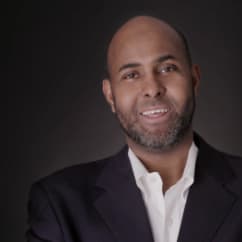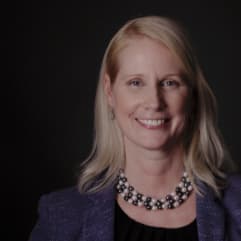Those partnerships will be more important than ever as we navigate through the immediate challenges posed by COVID-19 and continue meeting the long-term connectivity needs of our region, all of Canada and the world.
Deborah Flint, President and Chief Executive Officer
Although the GTAA’s annual review of operations focuses largely on the previous fiscal year, it’s also an opportunity to consider recent achievements in light of what comes next for Toronto Pearson as we pursue our long-term strategy. We’ve therefore reviewed the report’s contents through the lens of recent events to ensure we provide the most helpful information for assessing our airport’s resilience, adaptability and sustainability.
In preparing this first message to stakeholders since my appointment as CEO, I was struck by how a theme developed over months – Pearson Partners – has become, in the present context, more apt than ever. The partnerships showcased in this report, and in the video messages that accompany it, are representative of the many powerful collaborations that have transformed Toronto Pearson into one of the world’s leading airports. Those partnerships will be more important than ever as we navigate through the immediate challenges posed by COVID-19 and continue meeting the long-term connectivity needs of our region, all of Canada and the world.
The benchmarks of progress
Pearson’s standing among major global hubs was reinforced during the past year, as passenger traffic exceeded the 50-million mark. It’s one more measure of the growing role our airport plays in connecting people, products, services and entire communities to a world of opportunity.
That said, our growth moderated somewhat in 2019, increasing by 2 per cent compared to an annual average rate of 6 per cent from 2012 through 2018. This underlines a key point about our future trajectory: Pearson grows not to fulfill some ambitious planning target, but in response to the changing needs of the regional, national and global economies. Even before the risk of a coronavirus outbreak began to emerge in late 2019, there was a great deal of uncertainty in the overall economic outlook, largely as the result of unpredictable trade discussions and wider geopolitical tensions. A number of challenges affected the aviation industry in particular, notably currency fluctuations and volatile oil prices. And the worldwide grounding of the Boeing 737 MAX aircraft over safety concerns had an impact on traffic volumes.
It’s important, though, to place these moderating factors in perspective. Even as Toronto Pearson served nearly a million more passengers, we also deepened our engagement with all travellers by expanding and enhancing our retail, dining and other services to enrich their airport experience. As a result, commercial revenues – from non-aeronautical sources such as restaurants and shops, parking, ground transportation and rent paid by airlines for check-in counters and kiosks – grew to a record $555.5 million.
Continued strong returns from our investment in the passenger experience help to ensure the financial sustainability of our airport. And they show the material impact of our efforts to constantly improve service levels: For the third consecutive year, Toronto Pearson was ranked #1 in North America in the Airport Service Quality (ASQ) satisfaction survey conducted by Airports Council International. Our ASQ score of 4.48 is the highest not only on this continent, but among all hubs serving more than 40 million passengers annually in Europe, Africa, Australia, Latin America and the Caribbean.
These financial and reputational benchmarks are a great source of pride for everyone who works at Toronto Pearson. And they point to the power of partnerships in driving our success.
We’re here not only to connect our region to the world, but to create deeper connections within the region that help build prosperity, resilience and sustainable growth.
Deborah Flint, President and Chief Executive Officer
Partnering with our carriers
The GTAA’s most significant business partnerships are with the airlines that fly in and out of Toronto Pearson, Air Canada and WestJet foremost among them. Both in our long-term agreements and in day-to-day operations, we’re aligned with our carriers on how we can best serve the rapidly changing air travel market. We collaborate on everything from the development of new routes to improved baggage systems. We also align our efforts in support of connecting passengers, who increasingly see Pearson as the most efficient gateway between North America – where we’re ranked #2 for international connectivity – and cities around the world. Our major airline partners also advise on the various facilities enhancements and new service offerings by which we strive to deliver a better passenger experience.
Behind the scenes, Air Canada and WestJet have joined the GTAA, NAV Canada and other stakeholders as we explore the potential of Airport Collaborative Decision Making (A-CDM). By sharing real-time data to better integrate operational systems and processes, we can enable smoother, more efficient travel through our airport. As detailed in this report, we’re already seeing the positive impact of collaborative initiatives like the early morning arrivals trial, which has helped carriers provide better service while reducing fuel consumption and carbon emissions. Indeed, many of Pearson’s sustainability efforts start with our carrier partnerships, whether we’re working together to reduce inefficient idling and taxi times, or targeting more specific goals, as in our program with Air Canada to retrofit A320 aircraft for quieter performance.
Realizing our collective potential
Advancing sustainability is also a key objective of our integrated transit strategy for Toronto Pearson, which we’re moving forward by partnering with the Government of Canada, the Government of Ontario, municipal governments, Metrolinx, other transportation agencies and diverse stakeholder groups. We view improved transit not simply as a way to provide better access to our airport, but as the key to unclogging the region’s roads and reducing greenhouse gas emissions. At the same time, a better transit network will boost the social and economic dimensions of sustainability, creating opportunities in surrounding communities – particularly the Airport Employment Zone, Canada’s second largest employment cluster, which is home to more than 300,000 jobs.
In 2019, we also took a closer look at employment opportunities within Toronto Pearson by conducting the first comprehensive workforce study ever undertaken by a Canadian airport. The findings offer new insights into the 50,000 people employed at our airport, beginning with their sheer diversity in terms of age, gender, education, ethnicity and other factors. Pearson employees shared their frustrations, especially over the need for better transit options. But they also expressed great optimism about a work environment they see as stable, stimulating and rich with opportunities. Our job now, building on this feedback, is to take a more considered approach to helping all employees realize their full potential as we leverage the remarkable partnerships we’ve built with our unions and the nearly 400 employers that work together at Toronto Pearson.
Connecting people to opportunity
Many respondents to our workforce study are underemployed – that is, their education or skill levels exceed what is required in their current jobs. Some are younger workers, eager for a chance to prove what they can do; others are newcomers whose credentials and past experience aren’t immediately recognized by Canadian employers. As we now look for ways to better deploy the wealth of talent at Toronto Pearson, it’s part of a broader commitment to helping underemployed people in nearby communities. To that end, in 2019 we once again directed 1 per cent of the GTAA’s annual net revenue to our community investment program, the Propeller Project. As of year-end, we’d committed $1 million in funding to not-for-profit organizations in Toronto, Mississauga and Brampton that focus on helping underemployed people pursue more fulfilling careers and contribute to overall economic vitality.
This is what a strategic hub like Pearson does. We’re here not only to connect our region to the world, but to create deeper connections within the region that help build prosperity, resilience and sustainable growth – because you need to invest in both dimensions, global and local, to realize the full value of connectivity.
Sustaining the vision
In closing, I’d like to express my appreciation to the GTAA’s Chair, Doug Allingham, and to all of the Board members who’ve provided such valuable insights, guidance and support as I’ve taken on the role of CEO. It’s a privilege to be asked to lead this remarkable organization, and I look forward to the Board’s continued support and strategic counsel going forward.
I would also like to thank my predecessor, Howard Eng, whose eight-year legacy of achievements has created a solid foundation for the future. I’m grateful for the advice and wisdom that Howard has shared throughout the transition, and I know that our achievements going forward will build on all that he has done to elevate Toronto Pearson on the world stage. My thanks as well to the leaders on our executive team, who bring a wealth of talent and experience to delivering on Toronto Pearson’s strategic priorities.
As for the people who put those priorities into action – thank you to the 1,800 direct employees of the GTAA, and to the broader community of nearly 50,000 Pearson employees whose skill, energy and commitment are what make this one of the world’s top-ranked airports. And lastly, my heartfelt thanks, on behalf of everyone at Toronto Pearson, to the diverse stakeholders – community members, businesspeople, leaders of not-for-profits, representatives of all levels of government – who are helping us pursue a bold vision for Canada’s largest airport, guided by our shared values and a common purpose.
In this spirit of partnership, we’ll address the immediate challenges of a global pandemic while staying focused on our region’s – and the world’s – longer-term connectivity needs. I look forward to doing great things together as we create the next chapter in Toronto Pearson’s story.
Deborah Flint
President and Chief Executive Officer








